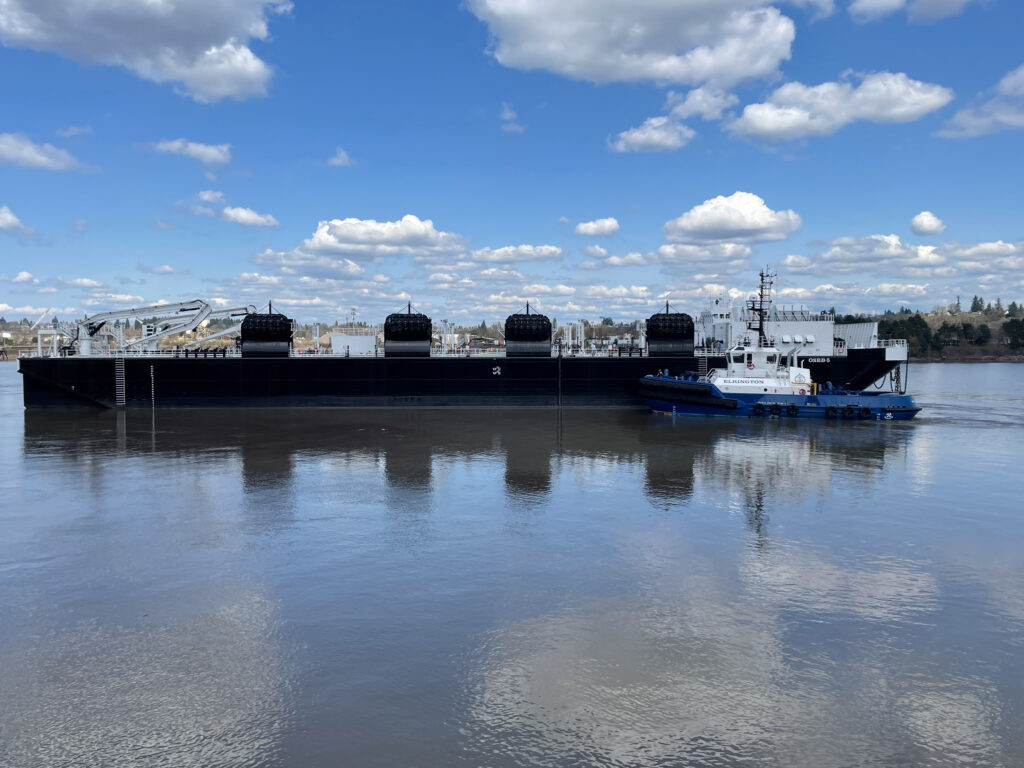Submitted by Alyeska Corporate Communications

The shine has yet to dim on Alyeska Pipeline Service Company’s newest on-water powerhouse; the OSRB-5 joined the Ship Escort Response Vessel System, or SERVS, fleet in 2023 and is still impressing its crews with its modern and state-of-the-art technologies.
“This barge is another exciting advancement in an already world-class fleet,” said Larry Miles, SERVS marine superintendent. “She’s an investment – though hopefully never needed – in keeping Prince William Sound safe for years to come.”
SERVS was created after the Exxon Valdez oil spill in 1989, to prevent oil spills and provide oil spill preparedness and response capabilities for Alyeska and the marine shipping companies who operate the tankers that call at the Valdez Marine Terminal. Working closely with the U.S. Coast Guard, SERVS personnel monitor vessel traffic so tankers can safely travel through the Sound and coordinate a fleet of purpose-built vessels and response equipment.
The OSRB-5 replaced the Mineral Creek, a 40-year-old lightering barge, usually stationed at Naked Island in mid-Prince William Sound.
The OSRB-5 was built by Gunderson shipyard in Portland, Oregon. At 400 feet long and 96 feet wide, it shares much of the same design and equipment as other barges, with key differences that make it unique and amplify its versatility.
As a lightering barge, its primary purpose is to remove cargo from a tanker in peril; it has large fenders to protect both vessels when alongside each other. The OSRB-5 also has state-of-the-art Crucial disk skimming capabilities for open water operations. It offloads mini barges used by fishing vessels to collect oil near shorelines.
After learning from the other OSRBs for the last five years, SERVS crews requested a specific paint along the deck where boom is managed. The first OSRBs had non-skid paint that impacted the boom.
The OSRB-5 features an extra generator and hydraulic power unit to run the mini barge offloading station and the deluge pump for snow removal was upgraded to a deep well pump.
Alyeska’s ongoing commitments to Prince William Sound meet the requirements and expectations of its contingency plan, to be ready and prepared to protect the Sound, its waters, and shorelines from impacts of incidents related to oil transport. It’s the singular focus of the crew at SERVS – a tight-knit team personally invested in the health and vibrancy of the region.